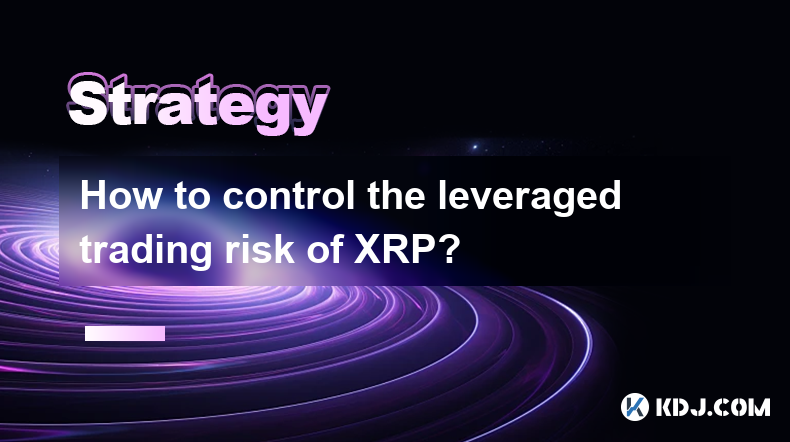-
 Bitcoin
Bitcoin $84,507.2812
-0.42% -
 Ethereum
Ethereum $1,588.3732
0.51% -
 Tether USDt
Tether USDt $0.9998
0.00% -
 XRP
XRP $2.0648
0.24% -
 BNB
BNB $591.9548
0.55% -
 Solana
Solana $135.0798
-0.01% -
 USDC
USDC $0.9998
-0.01% -
 Dogecoin
Dogecoin $0.1578
2.37% -
 TRON
TRON $0.2414
-2.26% -
 Cardano
Cardano $0.6298
2.42% -
 UNUS SED LEO
UNUS SED LEO $9.2291
-0.03% -
 Chainlink
Chainlink $12.6472
1.40% -
 Avalanche
Avalanche $19.1676
0.65% -
 Toncoin
Toncoin $2.9999
1.62% -
 Stellar
Stellar $0.2415
0.60% -
 Shiba Inu
Shiba Inu $0.0...01219
3.87% -
 Hedera
Hedera $0.1662
1.17% -
 Sui
Sui $2.1238
0.17% -
 Bitcoin Cash
Bitcoin Cash $337.2666
1.67% -
 Polkadot
Polkadot $3.6886
1.34% -
 Litecoin
Litecoin $75.8152
1.20% -
 Hyperliquid
Hyperliquid $16.8554
-1.03% -
 Dai
Dai $1.0000
0.00% -
 Bitget Token
Bitget Token $4.4146
1.08% -
 Ethena USDe
Ethena USDe $0.9992
0.01% -
 Pi
Pi $0.6510
5.74% -
 Monero
Monero $215.2710
-0.19% -
 Uniswap
Uniswap $5.2054
1.00% -
 Pepe
Pepe $0.0...07282
3.18% -
 OKB
OKB $50.3757
0.45%
How to reduce borrowing costs in Binance Margin Trading?
To reduce borrowing costs on Binance Margin, understand interest rates, choose assets wisely, optimize borrowing amounts, and leverage VIP benefits.
Apr 06, 2025 at 10:29 am

Margin trading on Binance allows users to borrow funds to increase their trading power, but managing the costs associated with borrowing is crucial for maximizing profitability. Reducing borrowing costs in Binance Margin Trading involves understanding the mechanics of interest rates, strategically managing your borrowed assets, and leveraging available tools and features provided by Binance. This article will guide you through the steps and strategies to effectively lower your borrowing expenses.
Understanding Interest Rates on Binance Margin
The first step to reducing borrowing costs is to understand how interest rates are calculated on Binance Margin. Interest rates on borrowed assets are charged on an hourly basis, and the rate can fluctuate based on market conditions and the demand for the asset. Binance uses a tiered system where the more you borrow, the higher the interest rate you may have to pay.
To check the current interest rates for different assets, follow these steps:
- Navigate to the Binance website and log into your account.
- Go to the "Margin" section and select "Overview."
- Scroll down to the "Interest Rates" section to view the current rates for each asset.
Understanding these rates helps you plan your borrowing strategy to minimize costs.
Choosing the Right Assets to Borrow
Selecting the right assets to borrow can significantly impact your borrowing costs. Assets with lower interest rates are generally more cost-effective to borrow. However, you should also consider the potential returns on the assets you plan to trade with the borrowed funds.
To choose the right assets:
- Analyze the interest rates for different assets on the Binance Margin platform.
- Compare these rates with the potential returns of the assets you intend to trade.
- Consider the volatility and liquidity of the assets, as these factors can affect your trading strategy and the overall cost of borrowing.
Optimizing Borrowing Amounts
Borrowing the right amount is crucial for managing costs. Borrowing more than necessary can lead to higher interest rates and increased borrowing costs. Conversely, borrowing too little may limit your trading potential.
To optimize your borrowing amounts:
- Calculate the exact amount you need for your trading strategy.
- Consider using the "Isolated Margin" mode, which allows you to set a specific amount of margin for each trading pair, helping you control your borrowing more precisely.
- Regularly review and adjust your borrowed amounts based on your trading performance and market conditions.
Utilizing Cross Margin and Isolated Margin Modes
Binance offers two margin modes: Cross Margin and Isolated Margin. Each mode has its advantages and can be used to manage borrowing costs effectively.
- Cross Margin Mode: In this mode, all of your margin balance is used as collateral for all open positions. This can be beneficial if you have a diversified portfolio and want to spread the risk. However, it can also lead to higher borrowing costs if one position performs poorly and affects the entire margin balance.
- Isolated Margin Mode: This mode allows you to allocate a specific amount of margin to each trading pair. It helps you control the risk and borrowing costs for each position independently. If one position performs poorly, it won't affect your other positions.
To switch between these modes:
- Go to the "Margin" section on Binance.
- Select the trading pair you want to trade.
- Click on the "Switch to Isolated Margin" or "Switch to Cross Margin" button, depending on your current mode.
Managing Borrowed Assets Efficiently
Efficient management of borrowed assets is key to reducing borrowing costs. Regularly monitoring your positions and adjusting your strategy can help you minimize interest expenses.
To manage your borrowed assets efficiently:
- Keep track of the interest accrued on your borrowed assets. You can view this information in the "Margin" section under "Interest History."
- Repay borrowed assets when possible to reduce the interest you owe. To repay a loan, go to the "Margin" section, select "Repay," choose the asset, and enter the amount you want to repay.
- Consider using the "Auto-Renew" feature for loans, which can help you manage your borrowing more conveniently. To enable auto-renew, go to the "Margin" section, select "Borrow," choose the asset, and toggle the "Auto-Renew" option.
Leveraging Binance VIP Program
Binance offers a VIP program that can help you reduce borrowing costs. As you increase your trading volume and hold more BNB, you can achieve higher VIP levels, which come with lower interest rates on margin loans.
To leverage the VIP program:
- Increase your trading volume on Binance to qualify for higher VIP levels.
- Hold more BNB in your account, as this is one of the criteria for achieving higher VIP levels.
- Regularly check your VIP status and the associated benefits in the "User Center" section of your Binance account.
Frequently Asked Questions
Q: Can I change the interest rate on my existing margin loan?
A: No, the interest rate on an existing margin loan cannot be changed. However, you can repay the loan and borrow again at the current rate if it is more favorable.
Q: What happens if I fail to repay my margin loan on time?
A: If you fail to repay your margin loan on time, Binance may liquidate your positions to cover the outstanding debt. It's important to monitor your margin balance and ensure you have sufficient funds to cover your loans.
Q: Is there a minimum amount I can borrow on Binance Margin?
A: Yes, there is a minimum borrowing amount for each asset on Binance Margin. You can find the minimum borrowing amount for each asset in the "Borrow" section of the Margin platform.
Q: Can I use the same collateral for multiple margin loans?
A: Yes, in Cross Margin mode, you can use the same collateral for multiple margin loans. However, in Isolated Margin mode, each trading pair has its own isolated margin, and you cannot use the same collateral across different pairs.
Disclaimer:info@kdj.com
The information provided is not trading advice. kdj.com does not assume any responsibility for any investments made based on the information provided in this article. Cryptocurrencies are highly volatile and it is highly recommended that you invest with caution after thorough research!
If you believe that the content used on this website infringes your copyright, please contact us immediately (info@kdj.com) and we will delete it promptly.
- Shiba Inu (SHIB) Breaks Out of Critical Resistance Level, Targeting Another Zero-Loss Event
- 2025-04-19 10:20:13
- The Need for Standardized Data in the Decentralized Finance (DeFi) Market
- 2025-04-19 10:20:13
- Ruvi AI (RUVI) is Becoming the Real Disruptor in the Blockchain Space
- 2025-04-19 10:15:12
- Lung cancer diagnostics developer Lung Life AI (LON: LLAI) still plans to leave AIM following its US distribution deal
- 2025-04-19 10:15:12
- Despite This Recovery, New Technical Signals Suggest XRP May Be Heading for a Bearish Correction, Potentially Dipping to $1.60
- 2025-04-19 10:10:13
- Hedera Hashgraph (HBAR) Price Prediction: Can CCIP Launch Propel HBAR to New Highs?
- 2025-04-19 10:10:13
Related knowledge

What does SHIB's Cardano coefficient below 0.3 indicate?
Apr 19,2025 at 08:00am
What does SHIB's Cardano coefficient below 0.3 indicate? The Cardano coefficient, often used within the cryptocurrency community, is a metric that helps investors and analysts understand the correlation between different cryptocurrencies. When it comes to SHIB (Shiba Inu) and its Cardano coefficient falling below 0.3, this indicates a relatively low cor...

Should I reverse the operation when the long-short ratio of SHIB perpetual contract reaches 3:1?
Apr 19,2025 at 04:36am
Understanding the Long-Short Ratio in SHIB Perpetual ContractsThe long-short ratio is a key metric in the world of cryptocurrency trading, particularly when dealing with perpetual contracts. For SHIB (Shiba Inu) perpetual contracts, this ratio indicates the balance between traders who are betting on the price of SHIB to rise (long positions) and those b...

Where is the average cost line for short-term holders of SHIB?
Apr 19,2025 at 03:42am
The average cost line for short-term holders of SHIB, or Shiba Inu cryptocurrency, is a critical indicator that provides insights into the behavior and sentiment of investors who have held the token for a shorter duration. This line represents the average price at which these short-term holders acquired their SHIB tokens. Understanding where this line s...

What should I do after the head and shoulders top pattern of XRP appears?
Apr 19,2025 at 01:28am
The head and shoulders top pattern is a significant technical analysis indicator that many traders and investors in the cryptocurrency market, including those involved with XRP, pay close attention to. When this pattern appears in the price chart of XRP, it is often interpreted as a bearish signal, suggesting that a reversal in the current uptrend may b...

What does it mean for XRP to confirm the breakout of the previous high and then step back?
Apr 19,2025 at 04:42am
What does it mean for XRP to confirm the breakout of the previous high and then step back? In the world of cryptocurrency, technical analysis plays a crucial role in understanding market movements and potential future trends. One specific scenario that traders and investors often analyze is when a cryptocurrency, such as XRP, confirms the breakout of a ...

How to control the leveraged trading risk of XRP?
Apr 18,2025 at 09:50pm
Leveraged trading of XRP, like any other cryptocurrency, involves significant risk due to the high volatility of the market. Understanding and controlling these risks is crucial for any trader looking to engage in leveraged trading. This article will guide you through the essential steps and strategies to manage the risks associated with leveraged tradi...

What does SHIB's Cardano coefficient below 0.3 indicate?
Apr 19,2025 at 08:00am
What does SHIB's Cardano coefficient below 0.3 indicate? The Cardano coefficient, often used within the cryptocurrency community, is a metric that helps investors and analysts understand the correlation between different cryptocurrencies. When it comes to SHIB (Shiba Inu) and its Cardano coefficient falling below 0.3, this indicates a relatively low cor...

Should I reverse the operation when the long-short ratio of SHIB perpetual contract reaches 3:1?
Apr 19,2025 at 04:36am
Understanding the Long-Short Ratio in SHIB Perpetual ContractsThe long-short ratio is a key metric in the world of cryptocurrency trading, particularly when dealing with perpetual contracts. For SHIB (Shiba Inu) perpetual contracts, this ratio indicates the balance between traders who are betting on the price of SHIB to rise (long positions) and those b...

Where is the average cost line for short-term holders of SHIB?
Apr 19,2025 at 03:42am
The average cost line for short-term holders of SHIB, or Shiba Inu cryptocurrency, is a critical indicator that provides insights into the behavior and sentiment of investors who have held the token for a shorter duration. This line represents the average price at which these short-term holders acquired their SHIB tokens. Understanding where this line s...

What should I do after the head and shoulders top pattern of XRP appears?
Apr 19,2025 at 01:28am
The head and shoulders top pattern is a significant technical analysis indicator that many traders and investors in the cryptocurrency market, including those involved with XRP, pay close attention to. When this pattern appears in the price chart of XRP, it is often interpreted as a bearish signal, suggesting that a reversal in the current uptrend may b...

What does it mean for XRP to confirm the breakout of the previous high and then step back?
Apr 19,2025 at 04:42am
What does it mean for XRP to confirm the breakout of the previous high and then step back? In the world of cryptocurrency, technical analysis plays a crucial role in understanding market movements and potential future trends. One specific scenario that traders and investors often analyze is when a cryptocurrency, such as XRP, confirms the breakout of a ...

How to control the leveraged trading risk of XRP?
Apr 18,2025 at 09:50pm
Leveraged trading of XRP, like any other cryptocurrency, involves significant risk due to the high volatility of the market. Understanding and controlling these risks is crucial for any trader looking to engage in leveraged trading. This article will guide you through the essential steps and strategies to manage the risks associated with leveraged tradi...
See all articles
























































































